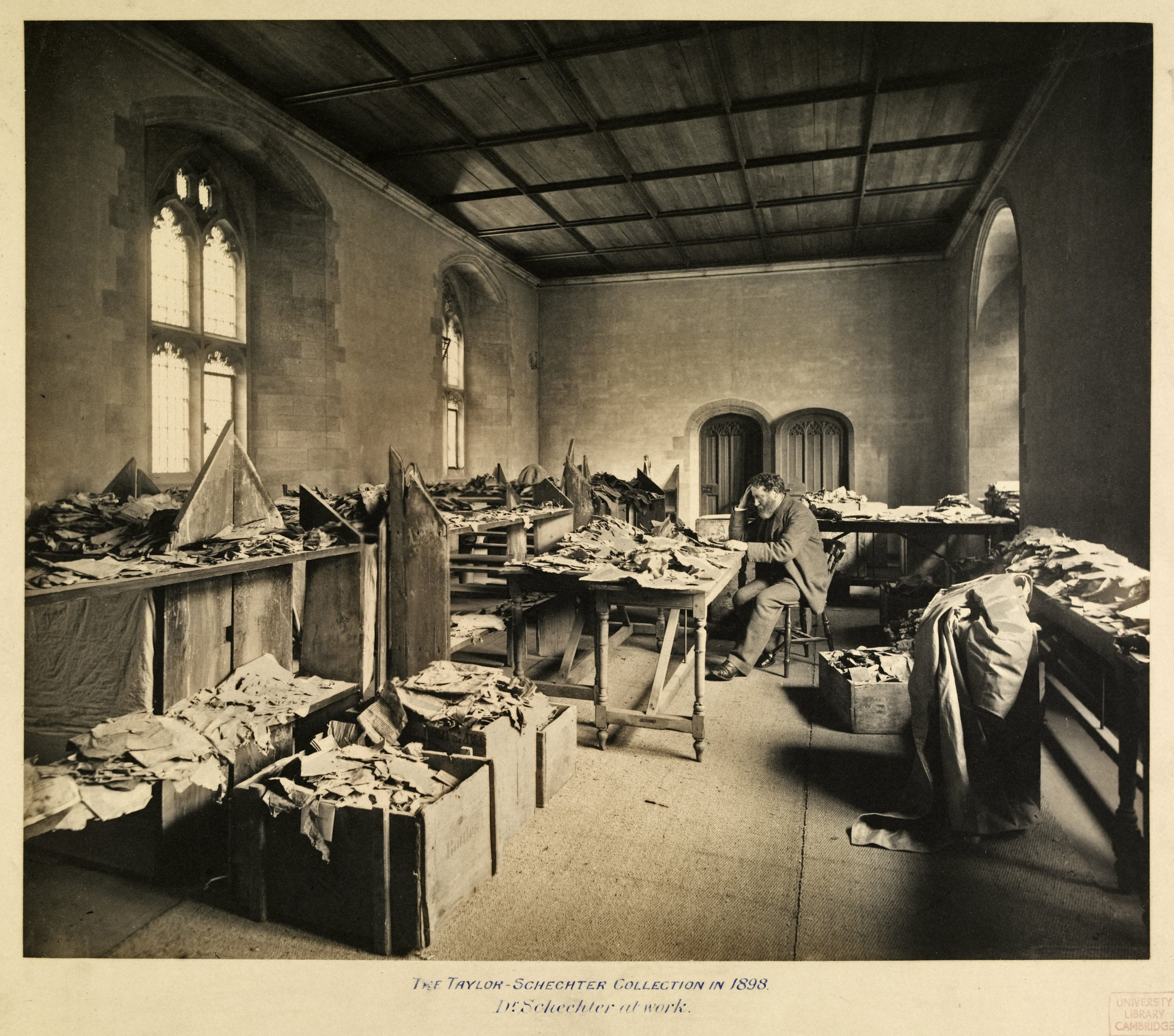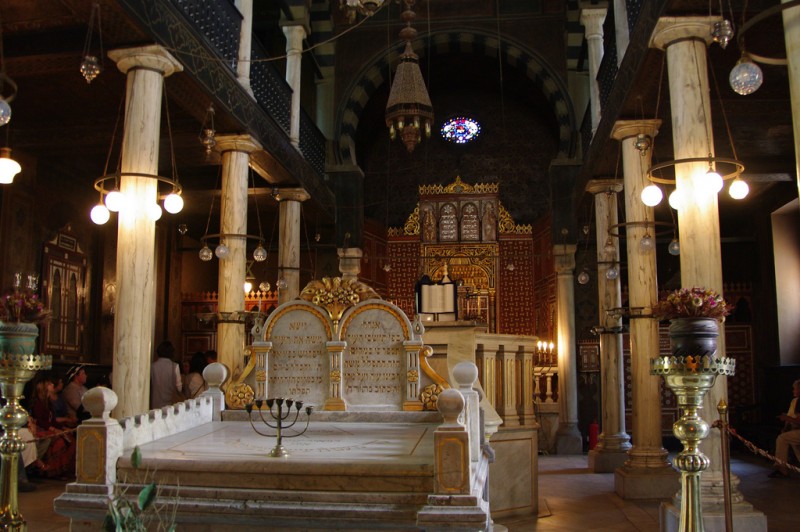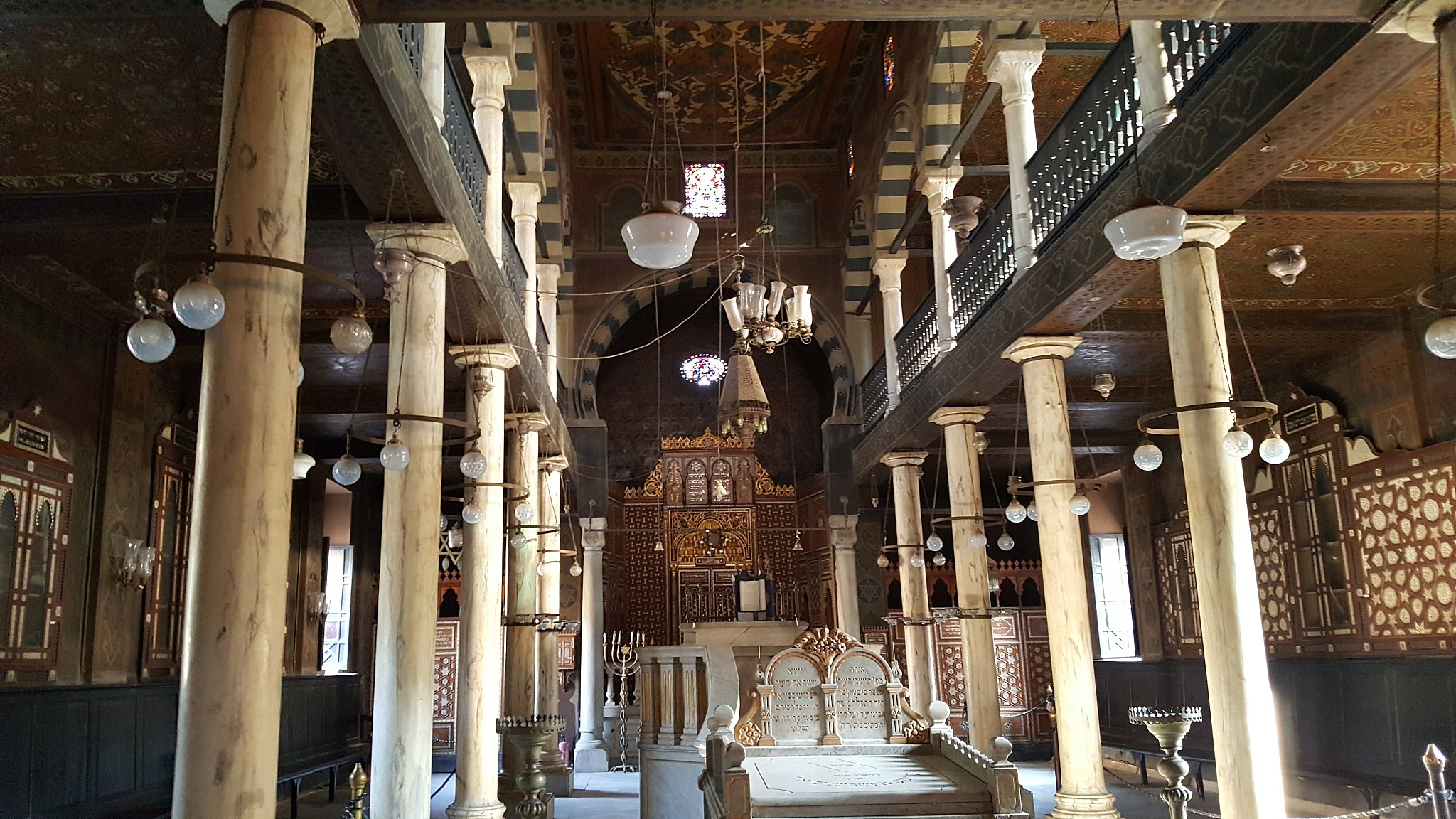The Ben Ezra Synagogue: A Fascinating Look at Jewish History in Egypt
In the heart of Cairo, behind the bustling streets and pyramids, lies the oldest and most significant Jewish temple in Egypt: the Ben Ezra Synagogue. This historic temple, originally a church before being bought by Jews in 882 AD, is home to a treasure trove of forgotten manuscripts, including rare Judaic texts, historical accounts, and secular poems dating from the 6th century to the 19th century CE.
This synagogue has quite a history and significance, and visiting it is like taking a journey back in time to explore the rich Jewish history of Egypt. In this blog post, we will delve into the fascinating history of the Ben Ezra Synagogue and its unique collection of documents, shedding light on the Jewish community's life in Egypt.
A brief overview of the topic
The Ben Ezra Synagogue is a significant historical and religious landmark in Cairo, Egypt. It was constructed in the 9th century AD and is the oldest Jewish temple in Cairo. Originally a Christian church, it was bought by Abraham Ben Ezra in 882 AD for 20,000 dinars. Over the centuries, the synagogue has undergone several restorations and renovations, with the present-day building dating back to 1892.
While it is now a tourist attraction, the synagogue played a crucial role in Jewish history in Egypt. It was a place of pilgrimage for North African Jews, and despite a dwindling community, it was maintained through pious donations. Today, the building holds great religious and historical significance. Its basement treasury contains records of the history and transactions of Cairo's Jewish community since the 11th century. The synagogue's location in the ancient area of Coptic Cairo adds to its fascination with historical and religious architecture visitors.
Although several myths surround the site, it remains a vital landmark for those interested in Jewish and Egyptian history. [1][2]
Importance of The Ben Ezra Synagogue in Jewish History in Egypt
The Ben Ezra Synagogue in Egypt continues to hold a special place in the hearts of Jews worldwide. Its importance cannot be overstated, given the vital role it played and continues to play in Jewish history.
This synagogue is a testament to the resilience and creativity of the Jewish people. Despite having faced significant challenges throughout their long history, they managed to preserve a unique cultural identity passed down through generations. Even more remarkable, their artistic engagement with the local Coptic community is evident in the synagogue's architecture and decoration.
The discovery of the genizah, which contained a vast collection of secular and sacred manuscripts, is another testament to the synagogue's historical and religious significance. Today, the Ben Ezra Synagogue functions primarily as a museum and tourist attraction, which showcases its magnificent architecture, including the cool marble floors and intricate decorations.
Though the Jewish community in Egypt is practically non-existent these days, the Ben Ezra Synagogue remains a tangible link to a rich and storied past, a testament to the extraordinary resilience of these ancient people. [3][4]
History of The Ben Ezra Synagogue
Founding and early years
The founding and early years of the Ben Ezra Synagogue are shrouded in mystery and controversy. However, evidence suggests that the synagogue predates the Islamic era in Egypt. Some scholars believe that it may have existed since the 9th century, and it is known that the current building dates back to the 1890s.
Throughout its history, the synagogue has undergone many renovations and restorations. The most significant of these was the conversion to a mosque in the 11th century, followed by its restoration back to a synagogue under the supervision of the Jewish community in the 19th century. The synagogue was also destroyed several times throughout its history but was always rebuilt and restored to its former glory.
The most significant change in the synagogue's status came in the 19th century when the genizah, a storeroom containing a vast collection of rare manuscripts, was discovered. The collection contained thousands of documents and texts dating back to the medieval era in Egypt, which offered scholars a unique insight into Jewish life during that period.
Today, the Ben Ezra Synagogue is primarily a tourist attraction and museum. It offers visitors a window into the rich Jewish history of Egypt. [5][6]

Conversion to a mosque and restoration
The Ben Ezra Synagogue has undergone a series of changes throughout its history. One of these changes was its conversion to a mosque during the Fatimid caliphate around 1013. It was believed that all Jewish and Christian houses of worship had to be destroyed within the caliphate's domains. However, in just twenty years, the Jewish community rebuilt their revered institution, which later played an important role in Egypt's Jewish community.
By the 15th century, the synagogue's role in the Jewish community had declined, and the area surrounding it deteriorated, despite the continued maintenance of the building through pious donations. Nevertheless, the synagogue was rebuilt in the early 1890s, and restoration efforts were made again early in the 20th century.
The rebuilding of the synagogue used mostly new materials, preserving and reusing only the original synagogue's wooden furnishings and some small marble columns in the second story. However, based on the analysis of documents from the Cairo Geniza and other sources, the synagogue was rebuilt to its original form, even replicating the original structure's design by following the arrangement of local Coptic churches within the Roman fortress.
Today, the restored synagogue functions primarily as a museum and is an essential cultural site for visitors interested in studying Jewish history in Egypt. [7][8]

Current status and use
With its rich history and cultural significance, the Ben Ezra Synagogue is an important location for the Jewish community in Egypt. However, with the decline of Egypt's Jewish population, the synagogue functions more as a tourist attraction and museum than a functioning congregation.
The synagogue is open to visitors worldwide and offers a unique opportunity to learn about Jewish history in Egypt. The building has undergone many renovations and restorations over the years, with the most recent in the early 20th century.
The exterior design and structure of the synagogue are quite intriguing. It boasts basilica-style architecture with two floors and a marble bima in the centre of the main floor. Meanwhile, the interior layout and decorations are quite intricate, with a large genizah and a diverse collection of documents.
The symbolism and religious significance that the synagogue holds bring visitors a deeper understanding of the Jewish faith. Even though it is no longer used as a functioning congregation, the Ben Ezra Synagogue remains essential to Egypt's rich history and cultural heritage. It is a must-visit location for people interested in Jewish history or wanting to learn more about Egypt's diverse culture. [9][10]
Architectural Features and Significance
Exterior design and structure
The Ben Ezra Synagogue is a remarkable Jewish monument with a rich history and significance. Its exteriors tell a story of their own. As you step closer, you'll immediately notice the beautiful basilica-style architecture of the building, which was completed after the collapse of the original temple in 1892. The delicate combination of brick and marble gives the building a unique touch of elegance and grandeur.
The building is two stories high, with the main floor dedicated to men and the second to women. The design allows everyone to enjoy the service comfortably. Steel bars separate the main floor into three parts, with an octagonal marble bima at the centre. The shape of the bima holds religious significance in Jewish culture and is specifically designed to accommodate the Torah scroll.
The decoration of the synagogue showcases different architectural and artistic styles, including Turkish period Ottoman, Hatai, and Roman decorations. Star patterns, rectangles, and pentagonal patterns are also dominant in design.
Seeing the synagogue is a must-visit for anyone interested in the history and culture of Jewish life in Egypt. The architectural design and décor of the building showcase the unique influence of Egyptian and Jewish cultures over the centuries. [11][12]

Interior layout and decorations
The Ben Ezra Synagogue's interior layout and decorations are truly remarkable. Its design reflects the changing cultural and economic periods of Egyptian Jews throughout history. The Jewish community's desire to celebrate their unique identity while connecting to the local environment is evident in the synagogue's decoration.
The synagogue's two-story structure features twelve marble columns that support two horseshoe arches, the earliest of their kind. The arrangement was modelled after the design of local Coptic churches, like the nearby Church of St. George.
Despite the destruction and restoration of the synagogue, the interior design has maintained its unique beauty. The Ark of the Torah is a splendid piece of art whose style dates back to the 15th century. The medallion design on the Torah ark door, a motif commonly used in bookbinding from that period, is another fascinating feature.
The synagogue's large genizah, a repository for abandoned documents, is another intriguing aspect worth visiting.
The synagogue's interior layout and decorations offer a fascinating glimpse into Jewish history and tradition. One can't help but be awed at the beauty of the synagogue's ornamentations. [13][14]
Symbolism and religious significance
As a place of Jewish worship, the Ben Ezra Synagogue is laden with Jewish symbols and religious significance. For example, the Torah ark, which houses the Torah scrolls, is an essential feature in any Jewish synagogue. It is the most sacred part of the synagogue, and its design and placement are often symbolic. In the Ben Ezra Synagogue, the Torah ark is located on the eastern wall, facing Jerusalem, the holiest site in Judaism. The Torah scrolls are placed in the ark, decorated with elaborate carvings and inscriptions.
Another significant feature in the synagogue is the bimah, a raised platform in the centre of the synagogue, from which the Torah is read, and sermons are delivered. In the Ben Ezra Synagogue, the bimah is made of Mamluk-era marble and surrounded by twelve columns, which symbolize the twelve tribes of Israel. The interior is decorated with ornamental geometrical motifs, floral patterns, and inscriptions in Hebrew and Arabic.
The symbols and decorations in the synagogue convey Jewish identity, history, and beliefs. They also serve as a reminder of the long and rich history of the Jewish community in Egypt. The Ben Ezra Synagogue is a place of worship and a cultural and historical monument that reflects the changing fortunes of the Jewish community in Egypt. [15][16]

Jewish Life and Community in Egypt
History of Jewish Presence in Egypt
The history of Jewish presence in Egypt is a fascinating and complex one. Evidence suggests that Jewish refugees probably fled to Egypt after Nebuchadnezzar's Babylonian conquest of Palestine in 586 BCE when they were dispersed throughout the world. However, there is no archaeological evidence to support this claim.
It was probably not until the wars of Ptolemy I Soter (367-283 BCE) against the rival successors of Alexander the Great that the first large-scale immigration of Jews into Egypt occurred. Invading Palestine four times in those wars, Ptolemy I is said to have removed up to 100,000 Jews from the land of Israel and settled them throughout Egypt in forts. While the numbers cited by the ancient historian Aristeas are likely exaggerated, various papyri inscriptions and ostraca from the third century BCE attest to substantial Jewish populations in all parts of Egypt.
The Jewish community in Egypt lived their social and cultural life distinct from their more conservative counterparts in Jerusalem. Although many Jews called Egypt home for centuries, their decline began in the Roman period. Even today, there remain a small number of Egyptian Jews. [17][18]

The Social and cultural life of Egyptian Jews
Egyptian Jews have a rich history in Egypt, and their social and cultural life was vibrant for centuries. The Jewish community in Egypt played a significant role in the country's economy and cultural life. They were involved in various trades, such as metalsmithing, textiles, and silk production. The community was also active in intellectual pursuits and contributed greatly to medicine, mathematics, and commerce.
Jews in Egypt had schools where their children were taught Hebrew and Arabic. They also celebrated various Jewish holidays and events in their synagogues, which included traditional meals and prayers. The Ben Ezra Synagogue, in particular, played a crucial role in the Egyptian Jewish community's social and cultural life. It was a place of worship and a community centre where Jews gathered for various activities, such as weddings, funerals, meetings, and other events.
Despite facing periods of oppression and persecution, the Egyptian Jewish community maintained its culture and traditions until most emigrated in the mid-20th century. Today, the Ben Ezra Synagogue is a reminder of a once-thriving Jewish community in Egypt and its rich social and cultural life. [19][20]
